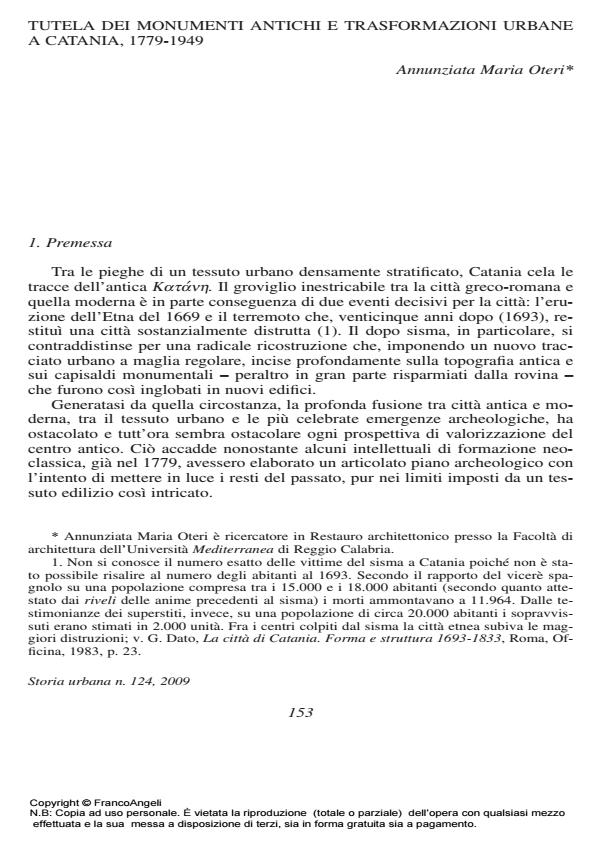Tutela dei monumenti antichi e trasformazioni urbane a Catania
Titolo Rivista STORIA URBANA
Autori/Curatori Annunziata Maria Oteri
Anno di pubblicazione 2010 Fascicolo 2009/124
Lingua Italiano Numero pagine 34 P. 153-186 Dimensione file 7211 KB
DOI 10.3280/SU2009-124006
Il DOI è il codice a barre della proprietà intellettuale: per saperne di più
clicca qui
Qui sotto puoi vedere in anteprima la prima pagina di questo articolo.
Se questo articolo ti interessa, lo puoi acquistare (e scaricare in formato pdf) seguendo le facili indicazioni per acquistare il download credit. Acquista Download Credits per scaricare questo Articolo in formato PDF

FrancoAngeli è membro della Publishers International Linking Association, Inc (PILA)associazione indipendente e non profit per facilitare (attraverso i servizi tecnologici implementati da CrossRef.org) l’accesso degli studiosi ai contenuti digitali nelle pubblicazioni professionali e scientifiche
"Nel corpo della città". Protection of ancient buildings and urban transformations in Catania (1779-1958) Catania, earthquake, reconstruction, ancient buildings, urban recovering programs The eruption of Mount Etna in 1669 and an earthquake that destroyed Catania in 1693 were both significant events for the future of Catania ancient buildings. After the earthquake in particular, the need for radical reconstruction imposed a new, regular, urban plan which did not consider the ancient topography of the city nor its most important buildings. Most of these buildings were not destroyed and were incorporated in new constructions. This confused mixture between the early 18th century urban plan and the most celebrated archaeological structures, which arose from the then existing circumstances, hindered, and still hinders - in spite of all efforts - every attempt to create an urban archaeological park. In the case of the "city of Etna" public intervention on ancient buildings was, at times, radical. In many cases, for instance, some 17th century structures, close to ancient structures, were demolished, thereby "freeing" the original structures. However this work was not systematic even if sometimes had a deep impact on the urban plan. While many structures were "freed" they were, and continue to be, extremely difficult to access. This method of "archaeology in town" was widespread. In fact, in spite of great progress in archaeological research, there were not significant urban programs addressed to recovering the Greek-Roman city as a whole but only its most important individual structures
Annunziata Maria Oteri, Tutela dei monumenti antichi e trasformazioni urbane a Catania in "STORIA URBANA " 124/2009, pp 153-186, DOI: 10.3280/SU2009-124006